Today’s Current Affairs: 12th January 2023 for UPSC IAS exams, State PSC exams, SSC CGL, State SSC, RRB, Railways, Banking Exam & IBPS, etc
Table of Contents
Training Launch Of Prithvi-II Missile:
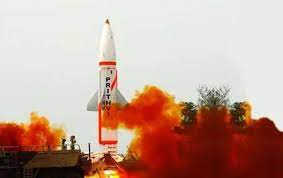
The Defence Research and Development Organisation (DRDO), successfully carried out a training launch of, Prithvi-II from the Integrated Test Range, Chandipur off Odisha.
Prithvi-II missile:
- It is a surface-to-surface, nuclear-capable short-range ballistic missile.
- It has a carrying 500-1,000 kilograms of warheads and is powered by liquid propulsion twin engines.
- Range: It has a strike range of 350 km.
- The missile is a proven system and is capable of striking targets with a very high degree of precision.
- The state-of-the-art missile uses an advanced inertial guidance system with manoeuvering trajectory to hit its target.
- It was inducted into the Indian armed forces in
- It was one of the first missiles developed under the Government of India’s IGMDP.
Village Defence Guards Scheme (VDGs):
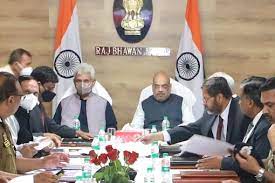
Government started the process of arming members of VDGs with assault rifles in Jammu region and CRPF to provide arms training to VDGs in the wake of recent terror attacks in the region.
- The aim of VDGs is to organize a small group of volunteer armed civilians in the identified villages along the borders as well as in-depth areas of the Jammu division, with a view to instill a sense of self-protection and ensure safety and security of such villages.
- VDGs shall be charged with the responsibility of protecting community installations and infrastructural facilities within the defined areas of their village.
- The Village Defence Committees (VDCs) were set up in the 1990s to arm villagers for self-defense purposes in the J&K region.
- In 2020, the policy of Village Defence Committees was revamped and Village Defence Groups were introduced, members of whom are called Village Defence Guards (VDGs).
- Based on assessment by law enforcement agencies, a group of armed civilians belonging to the ‘more vulnerable areas’ not more than 15 in number in each group, who shall be designated as VDGs shall be formed.
- Each group will be called the ‘Village Defence Group’ and shall be headed by a retired officer of the Army/Central Para Military Force (CPMF)/J&K Police.
- All VDGs are eligible for a monthly remuneration.
- The VDGs also function under the supervision of district superintendent of police(SP)/Senior superintendent of police(SSP).
Reservation To The Native Women Of The State : Governor Of Uttarakhand
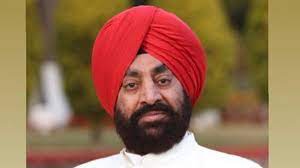
The Governor of Uttarakhand gave the nod to a Bill that gives 30% reservation to the native women of the state.
- The Uttarakhand Public Services (Horizontal Reservation for Women) Bill,2022, provides women with 30 per cent horizontal reservation in public services and posts, in addition to the existing quotas applicable in the state.
- The beneficiaries need to be women with a domicile certificate of Uttarakhand.
- If enough women are not available to fill the reserved seats, they will be filled with qualified male candidates in the order of proficiency.
- Horizontal reservation refers to the equal opportunity provided to other categories of beneficiaries such as women, veterans, the transgender community, and individuals with disabilities, cutting through the vertical categories.
- If women have 50 per cent horizontal quota, then half of the selected candidates will have to necessarily be women in each vertical quota category i.e., half of all selected SC candidates will have to be women, half of the unreserved or general category will have to be women, and so on.
- While a vertical reservation applies separately for each of the groups specified under the law, the horizontal quota is always applied separately to each vertical category, and not across the board.
- Reservation for Scheduled Castes, Scheduled Tribes, and Other Backward Classes is referred to as vertical reservation.
Assisted Reproductive Technology:

The Kerala High Court has said that personal choice to build a family is a fundamental right and fixing an upper age limit for the same was a restriction which needs a relook.
- The court passed the directive while disposing of a batch of petitions challenging the age limit of 50 years for women and 55 years for men prescribed under the Assisted Reproductive Technology (ART) (Regulation) Act, 2021, for undergoing the assisted reproductive technology.
- According to the petitioners, prescription of the upper age limit under Section 21 (G) of the ART Act is irrational, arbitrary, unreasonable and violative of their right to reproduction, which is acknowledged as a fundamental right.
- They sought to declare it as unconstitutional.
- The High Court has directed the National Assisted Reproductive Technology and Surrogacy Board to alert the Union government about the need for having a relook at the upper age limit prescribed for using assisted reproductive technology.
- Apart from this, the petitioners have also challenged the provision wherein medical practitioners have been brought within the purview of the Indian Penal Code (IPC) and offences have been made cognizable.
- These provisions are having a chilling effect on IVF practitioners across the country dissuading them from performing their professional duties due to the fear of prosecution.
- The ART (Regulation) Act 2021 provides a system for the implementation of the law on surrogacy by setting up of the National Assisted Reproductive Technology and Surrogacy Board.
- The Act aims at the regulation and supervision of ART clinics and assisted reproductive technology banks, prevention of misuse, and safe and ethical practice of ART services.
Strategic Roadmap With ‘Vision 2047’ : All India Football Federation

The All India Football Federation unveiled its strategic roadmap with ‘Vision 2047’, hoping that in the country’s centenary year of independence, India will emerge as a new powerhouse of Asian football.
- Developed in conjunction with all stakeholders within Indian Football, the roadmap has also sought and incorporated inputs from the Asian Football Confederation and FIFA (Fédération internationale de Football Association).
- AIFF has broken down ‘Vision 2047’ into six four-year strategic plans.
- The first of these will look to cover the period till 2026.
Indian Football’s Vision 2047:
- The national football philosophy of India would be based on collecting data from scouting, creating a technical curriculum, focusing on coach and player development and hoping it would translate into a talent pool for the national team.
- To create a national playing philosophy, the AIFF will develop the Coach Education Program to improve the quality of football at all levels of the ecosystem.
- The AIFF has also targeted creating 50,000 active coaches — almost 4,500 with a minimum AIFF C License — across the country.
- The focus on collecting data and creating a scouting system will be in charge of and will do so by 2026.
- The overall approach to finding a footballing philosophy though remains the same.
- The roadmap envisions India to be among the top four footballing nations in Asia, host one of the top leagues in Asia, and create a vibrant footballing ecosystem.
- AIFF aims to implement village grassroots programmes to reach 35 million children across 100 villages throughout India and also aim to register 1 million registered players and provide football education to 25 million children through Football for Schools.
- They noted that there is a huge gender disparity in participation at grassroots level.
- A four-level league table pyramid will be created for women’s football by 2026 with the top of the pyramid to be occupied by the Indian Women’s League (featuring 10 teams), followed by the 2nd Division (8 teams).
- AIFF has also targeted a minimum of 20 states to implement the new women’s youth structures by 2027.
- The women’s football ecosystem has been weak in the country and needed specific solutions to help increase participation and competency, also mentioning the need to improve the minimum salary.
- The AIFF will improve infrastructure by putting in place policy interventions that will incentivise government authorities, football clubs, corporates, and private investors to invest in infrastructure.
Nickel Alloy Coating

Scientists at the International Advanced Research Centre for Powder Metallurgy & New Materials (ARCI), an autonomous Research and Development Centre of the Department of Science and Technology (DST), Govt. of India, have developed a lab-scale process to deposit novel nanostructured Nickel alloy coatings.
- A new method of deposition of Nickel alloy coatings on high-performance materials in engineering applications can replace environmentally toxic chrome coatings.
- The coatings obtained are also highly corrosion-resistant and useful for the plastic ware industry.
- The process used pulsed current electroplating, which is environmentally benign with high production capacity.
- They have used electric current in the form of pulses of a duration of a few milliseconds for electroplating purposes.
- The process consists of an environment-friendly electrolyte consisting of nickel and tungsten ions that is the source of strengthening elemental tungsten (W) and nickel (Ni).
- The pulsed current is applied between the components to be coated, acting as a cathode and a non-consumable anode.
- The pulsed current effect was used for nano-crystalline coatings wherein high instantaneous current density for a very small duration resulted in a high rate of nucleation.
- The coatings were virtually porosity free, crack free with minimal hydrogen uptake.
- The use of pulsed current resulted in the nano-crystallization of nickel tungsten alloy coatings with high hardness (700-1200 HV) and wear resistance.
- The coatings were extremely corrosion-resistant and could withstand up to 700 hrs of salt spray.
- The coatings can withstand temperatures up to 500°C without thermal softening and can improve the life of die components by at least two times than conventional chrome plating.
Nickel:
- It does not occur freely in nature.
- It is found in association with copper, uranium and other metals.
- It is an important alloying material.
Increase In Blackbuck Population:
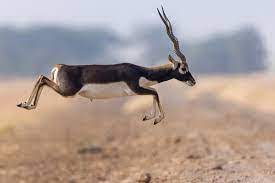
A recent study conducted by the Indian Institute of Science (IISc) has shed light on how blackbuck in India has fared in the face of natural and human-induced challenges to their survival.
- Researchers found that an ancestral blackbuck population first split into two groups: the northern and the southern cluster.
- The eastern cluster even though geographically close to the northern cluster seems to have emerged from the southern cluster.
- The study shows that despite all odds, male blackbuck appears to disperse more than expected, thus contributing to gene flow in this species.
- Females, on the other hand, appear to stay largely within their native population ranges, which the researchers inferred from unique mitochondrial signatures in each population.
- The data also showed an increasing trend in blackbuck population numbers as compared to the recent past.
Blackbuck:
- It is a species of antelope native to India and Nepal.
- While males have corkscrew-shaped horns and black-to-dark brown coats, the females are fawn-coloured.
- The animals are mainly seen in three broad clusters across India the northern, southern, and eastern regions.
- It is widespread in the states of Rajasthan, Gujarat, Madhya Pradesh, Tamil Nadu, Odisha, and other areas throughout peninsular India.
- Protection status:
- IUCN Red List: Least concerned.
- Wildlife Protection Act of 1972: Schedule I
- CITES: Appendix III
Section 6A Of The Citizenship Act, 1955:

A Constitution Bench led by Chief Justice of India D.Y. Chandrachud said it will first take up for preliminary determination whether Section 6A of the Citizenship Act, 1955 suffers from any “constitutional infirmity”.
- Section 6A was a special provision inserted into the 1955 Act in furtherance of a Memorandum of Settlement called the ‘Assam Accord’ signed on August 15, 1985.
- The accord was a tripartite agreement between the Centre, the Assam government and the All Assam Students Union, and came after years of protest against perceived demographic change and outsiders in the state.
Section 6A:
- It created a special provision for Assam by which persons who entered between January 1, 1966, and March 25, 1971, and who are residing in the state, upon being detected as foreigners, will be allowed to register
- Upon registration, such a person will have the same rights and obligations as a citizen of India, but will not be entitled to be included in any electoral roll for a period of 10 years.
- Foreigners who had entered Assam before January 1, 1966, and been “ordinarily resident” in the State, would have all the rights and obligations of Indian citizens including the right to vote
World Spice Congress 2023:

The Secretary to the Spices Board of India said that World Spice Congress 2023 will be held in Mumbai from 16-18 February 2023.
- Theme : VISION 2030: S-P-I-C-E-S (Sustainability, Productivity, Innovation, Collaboration, Excellence and Safety).
- Policymakers, regulatory authorities, spice trade associations, government officials as well as technical experts from key G20 countries will participate in the event.
- Maharashtra has been chosen as a venue because
- It is one of the leading states producing spices. It is the largest producer of turmeric in India.
- Maharashtra produces two GI-tagged turmeric varieties and one GI-tagged chilli variety. Coastal areas of Maharashtra are also known for the production of GI-tagged Kokum.
- Spices Board was constituted on 26th February 1987 under the Spices Board Act 1986 with the merger of the erstwhile Cardamom Board (1968) and Spices Export Promotion Council (1960).
- It is functioning under the Ministry of Commerce & Industry.
World Spice Congress:
- It was planned and conceived in 1990 as a forum for discussion and interaction between the importers and exporters of spices.
- Since its inception it has been Organized under the leadership of the Spices Board, Ministry of Commerce and Industry, Government of India.
Very Short-Range Air Defence System
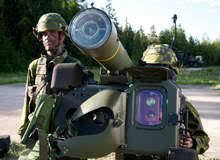
The Defence Acquisition Council (DAC) headed by Defence Minister accorded Acceptance of Necessity (AoN) to critical procurements for the defence forces, including that of the Very Short Range Air Defence System or VSHORAD (IR Homing) missile system.
- VSHORAD missile system is a man-portable air defence system (MANPADS).
- These are short-range, lightweight and portable surface-to-air missiles that can be fired by individuals or small groups to destroy aircraft or helicopters.
- They are having a maximum range of 8 kilometres and can engage targets at altitudes of 4.5 km.
- The missile incorporates many novel technologies including a miniaturized Reaction Control System (RCS) and integrated avionics, which have been successfully proven during the tests.
- The RCS is responsible for attitude control and steering by the use of thrusters and is also capable of providing small amounts of thrust in any desired direction or combination of directions.
- Designed and developed by DRDO’s Research Centre Imarat (RCI), Hyderabad in collaboration with other DRDO laboratories and Indian Industry Partners.




